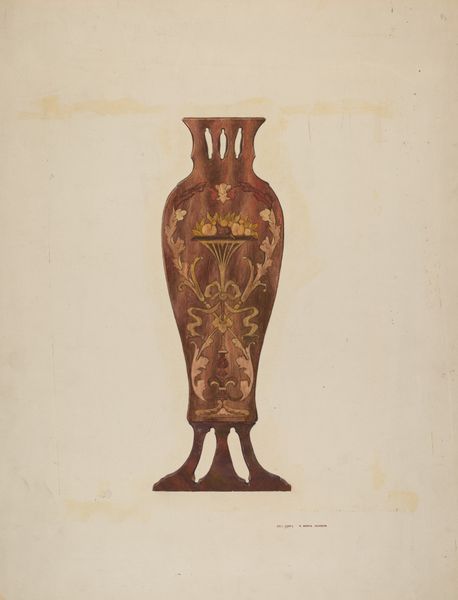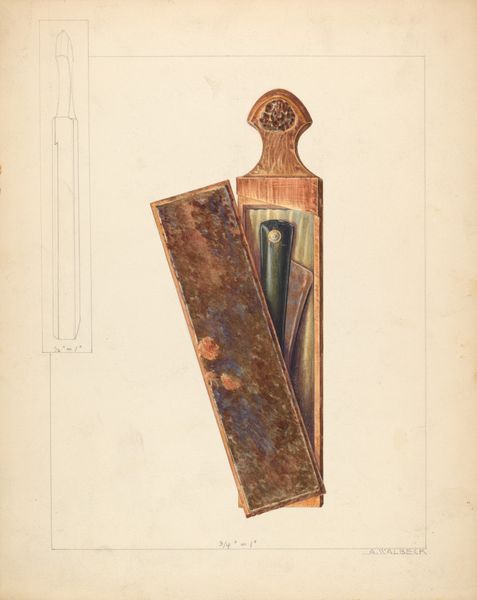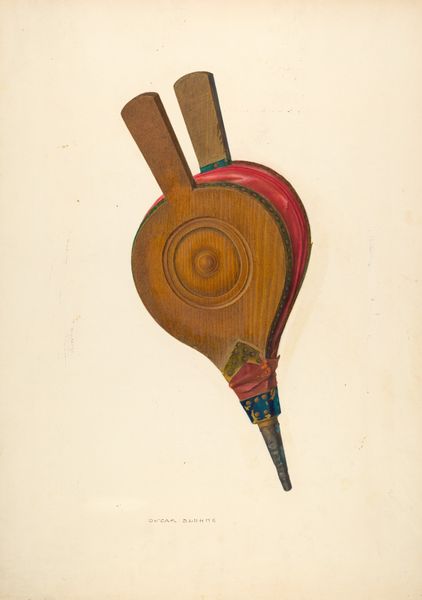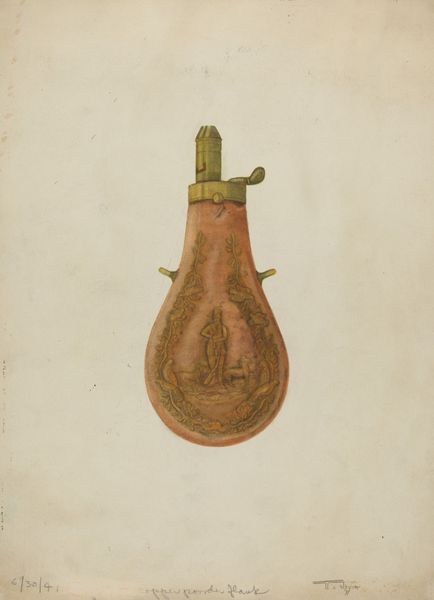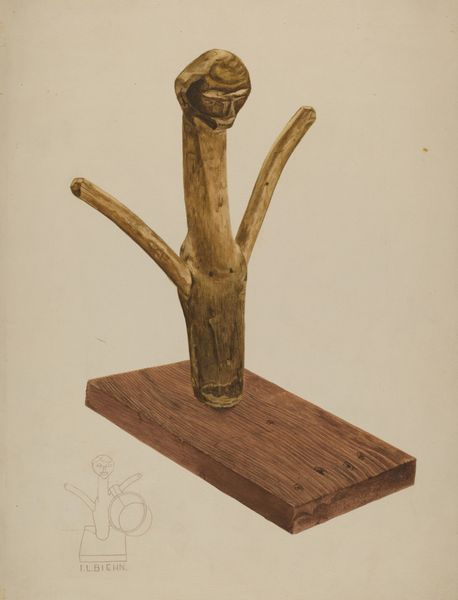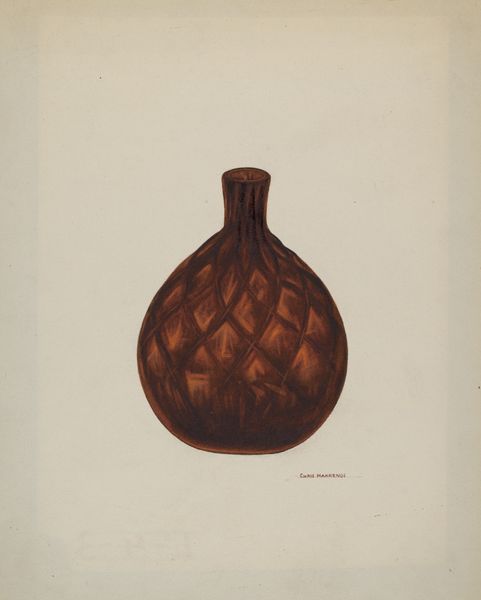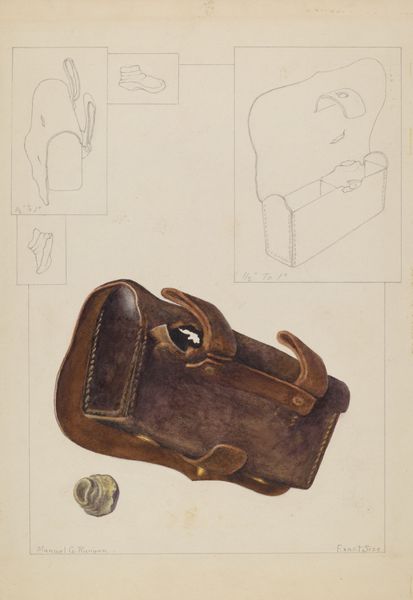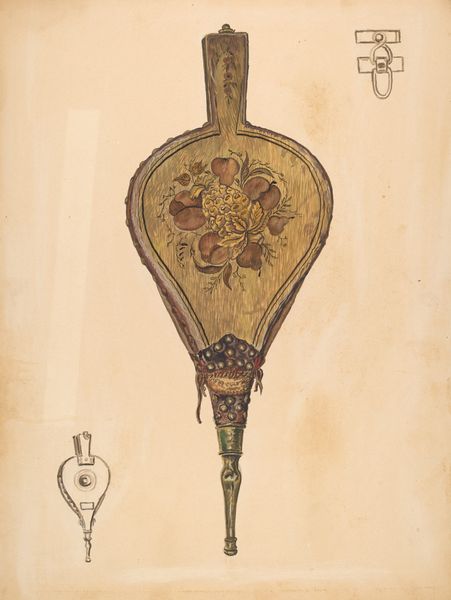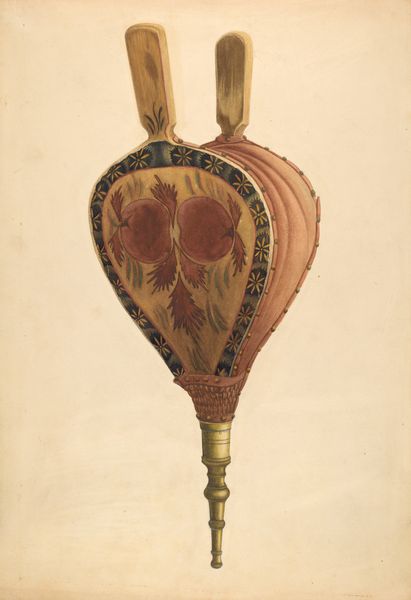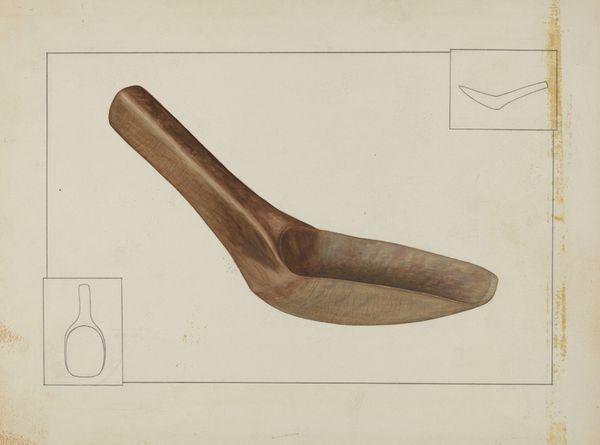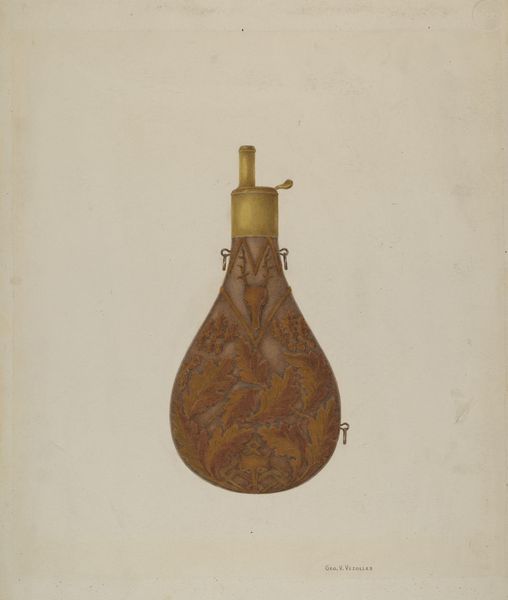
drawing, coloured-pencil, watercolor
#
drawing
#
coloured-pencil
#
watercolor
#
coloured pencil
#
watercolour illustration
#
watercolor
#
realism
Dimensions: overall: 34.5 x 24.8 cm (13 9/16 x 9 3/4 in.) Original IAD Object: 20 5/8" long; 9 1/4" wide
Copyright: National Gallery of Art: CC0 1.0
Curator: Immediately, the color palette strikes me as reserved yet somehow deeply evocative—ochre and hints of blues give the object this lovely antiquity. Editor: We are looking at "Bellows," a drawing by Katharine Merrill, dating circa 1937. It seems she used colored pencil and watercolor. Beyond being aesthetically pleasing, the bellows stands as a symbol of potential and raw energy. Curator: Absolutely! Historically, the bellows breathes life into the hearth. Beyond its domestic usage, this tool transforms base metals into things of beauty or of war. Power dwells within that seemingly simple instrument. Think of the mythical forge of Hephaestus or Vulcan. Editor: I completely agree. And its presence here in 1937. In the context of the lead-up to World War II, the imagery of a bellows carries weight. The promise and terror of potential were looming large in those interwar years. Was Merrill commenting on the looming potential for widespread destruction? Curator: Fascinating idea! I can't help but read the form as inherently sexual. A phallic form in a position to spread and penetrate a fire suggests a fertility ritual or potent expression of procreative energy. The feminine roundness contrasted against the wooden form makes me wonder whether the image carries both a conscious and subconscious awareness. Editor: Definitely, the connection to the body resonates. I see a different form of connection there too. Bellows reminds us to fight stagnation. They are designed for active engagement. Here in rendering, however, they've become objects of display for a comfortable class, divorced from the realities of labor. Curator: I like that you tie this to economic concerns and class divides. My read centers on timeless, archetypal human struggles and symbols, although, your argument opens this up beyond the individual and into the broader societal sphere. Editor: Well, and this reminds me that our experiences also shift our perception of symbols. It is vital to acknowledge this dynamic relationship that makes looking at art an active, rather than a passive experience. Curator: It certainly adds another layer to this, at first, unassuming picture. Thanks for your thoughts.
Comments
No comments
Be the first to comment and join the conversation on the ultimate creative platform.
